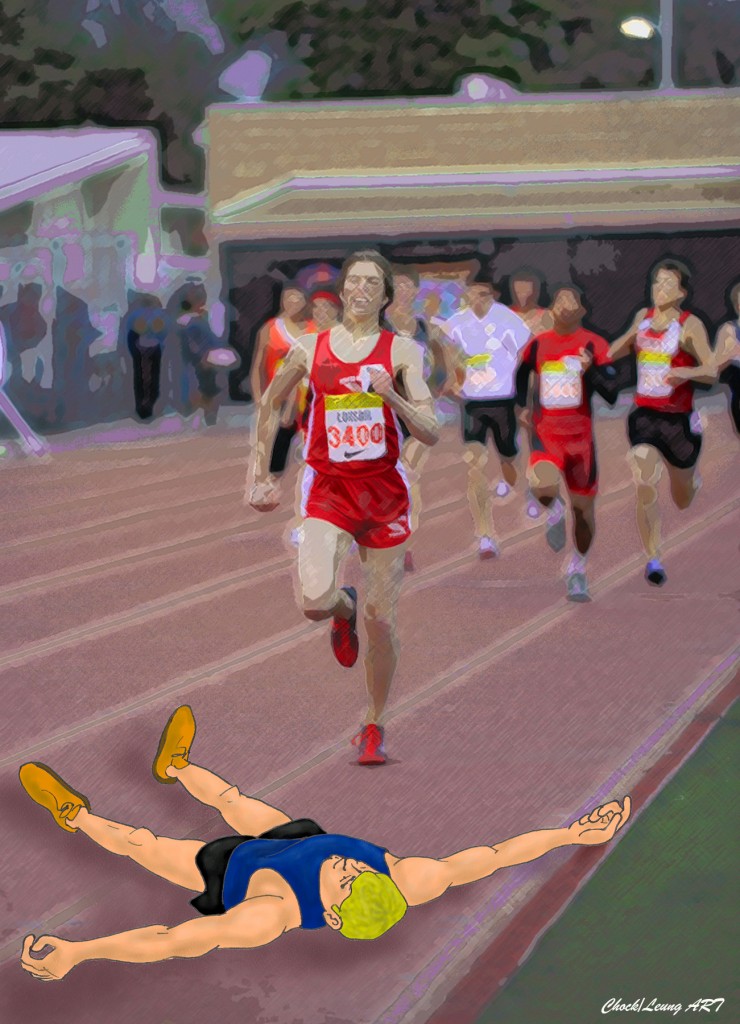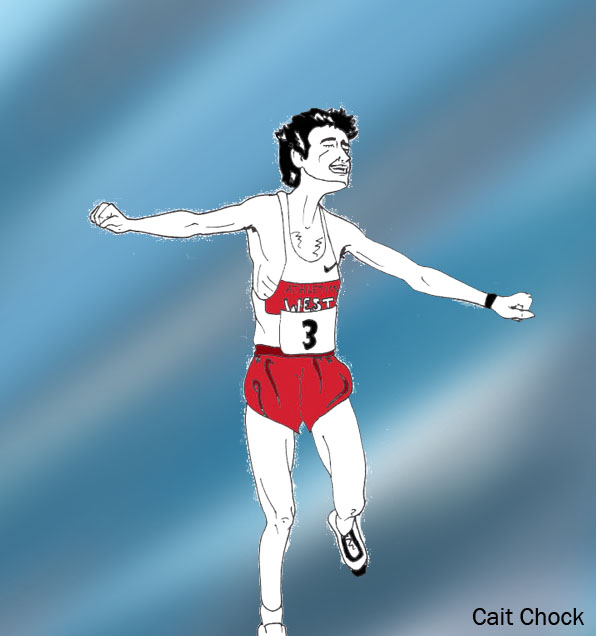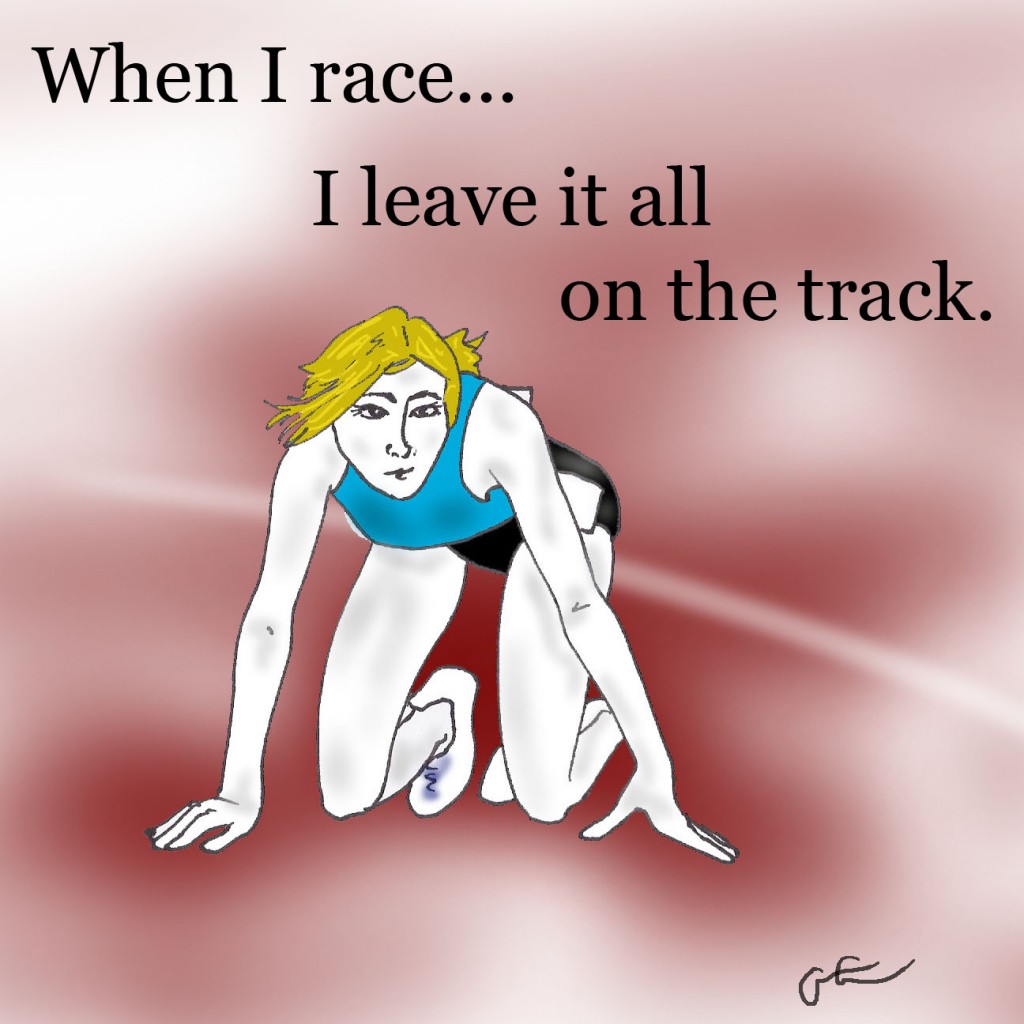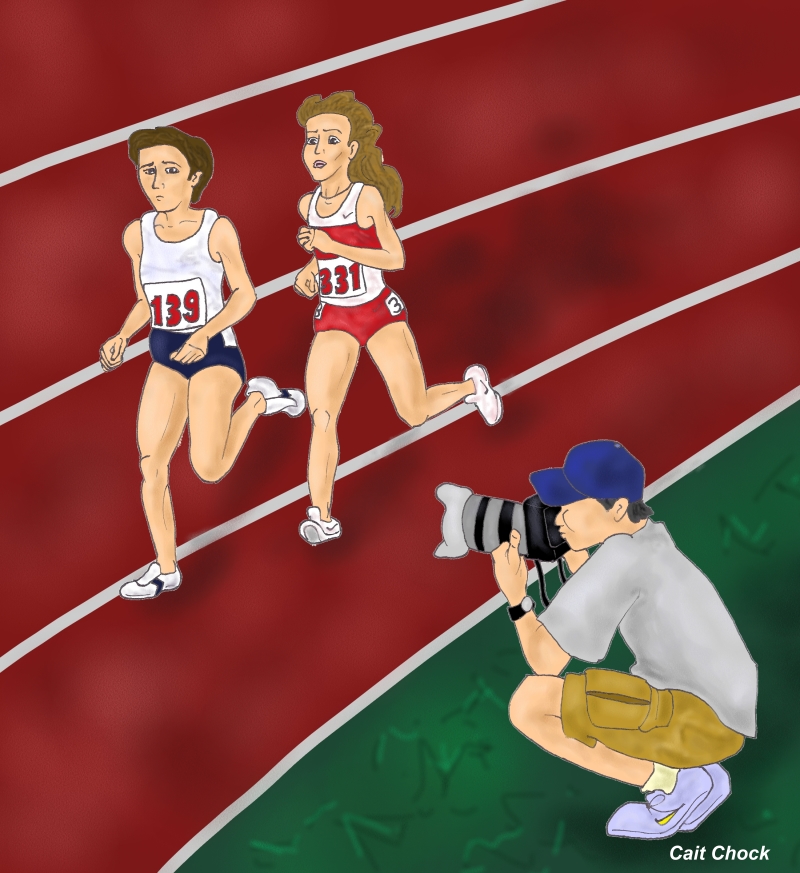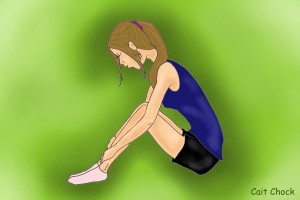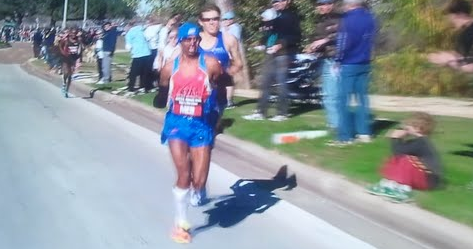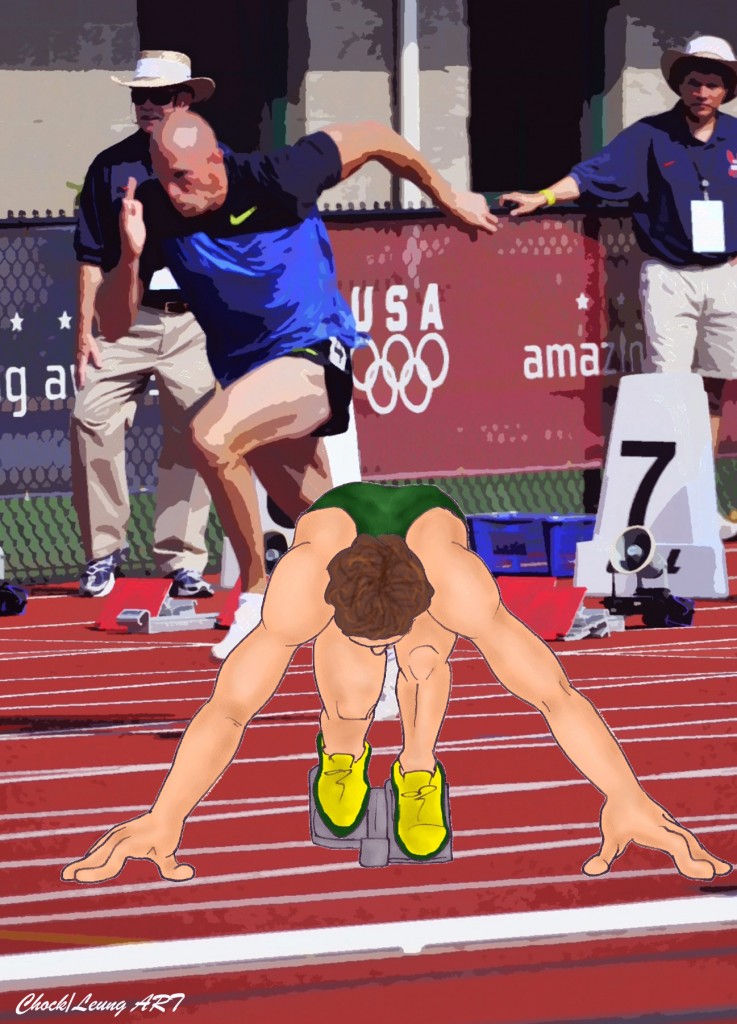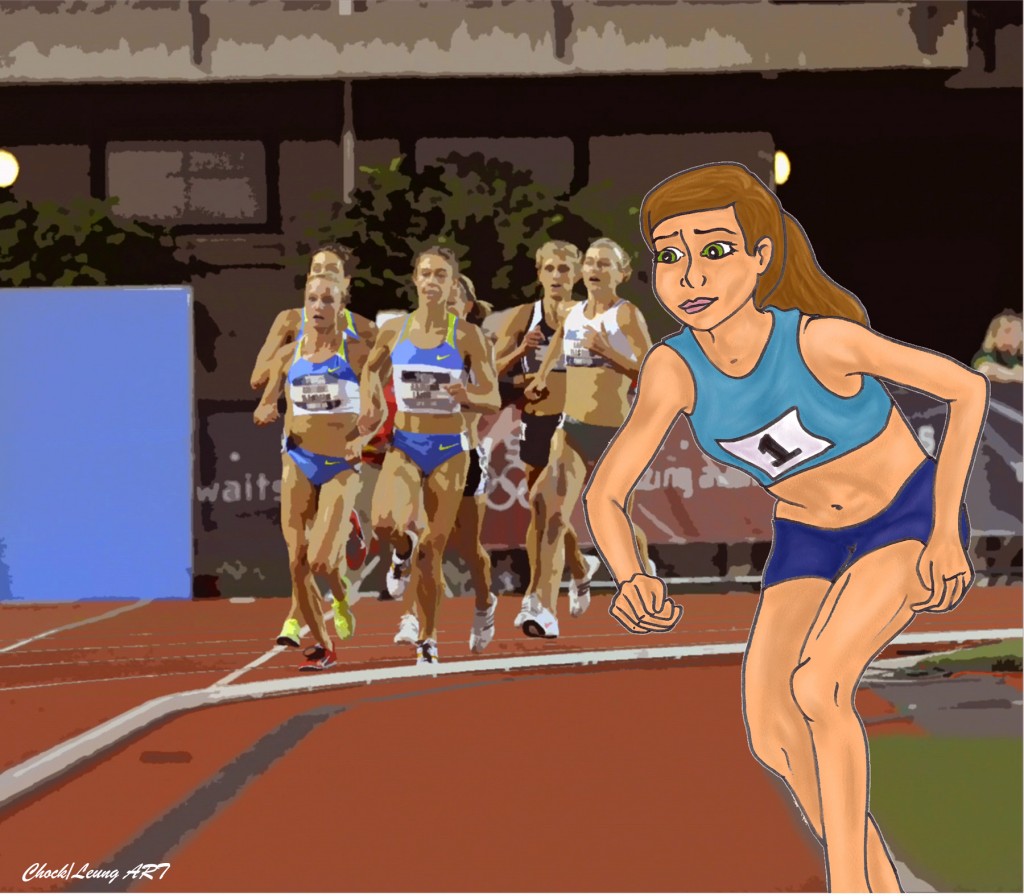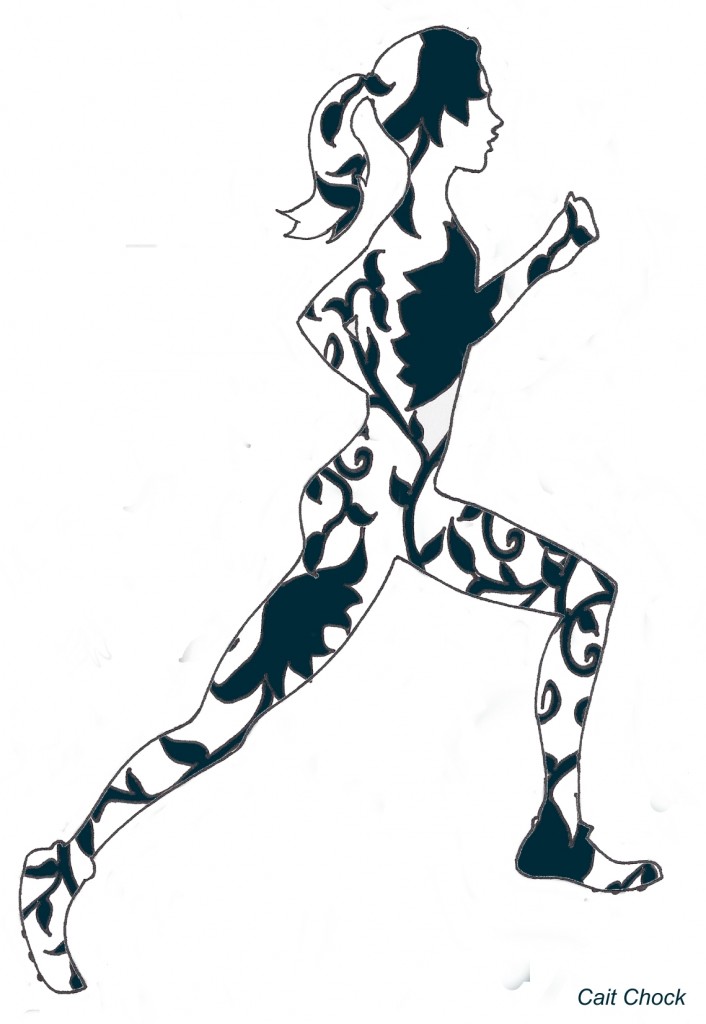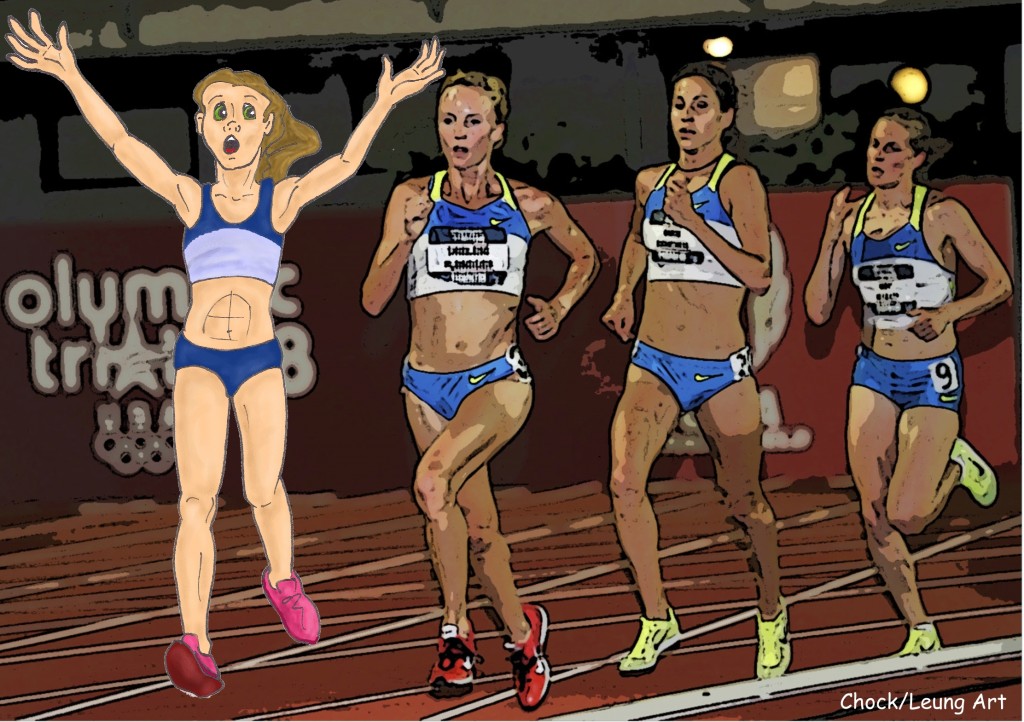“Being a distance runner is about handling pain. If you can’t manage pain, you probably won’t end up as a distance runner.” I love this quote from Kara Goucher featured in an excellent read from Running Times, ‘Pain: Deal With it.’

Okay, you had me at the title on that last one. But it’s true, pain and distance running trot hand in hand; as runners we often lie to ourselves about that, it’s a bit of a coping mechanism I suppose. If we didn’t to a degree deny how much it will hurt those last few miles or at the end of that race we may be hard pressed to actually start!
Certainly there are varying degrees of pain; full on grueling the last lap of the 10k, digging deep on that last 800 meter repeat, and the discomfort of training day in and day out. Discomfort, even ‘easy’ runs aren’t a walk in the park, you still are working out there and getting your heart rate up, the lungs working, the legs pounding the pavement so to speak.
If we wanted to be loafers then we could coin the term, but we’re not, we are runners and being as such we learn to deal with the pain.The pain that in a twisted sort of way we run towards. The way we feel afterwards is worth it.
I did a long post on the art of visualization HERE and also how lying to yourself works wonders HERE. The Running Times article has tips from multiple top distance runners. Some general themes:
* Zoning out. Distraction from the pain is key, by zoning out you really try to limit thoughts. Pinpoint a spot on the back of the person in front of you, look dead ahead and don’t lose contact with that fixed point. Mantras can also help with this, pick a single phrase and repeat it until it’s in sync with your breathing or footsteps and repeat it like a robot…zooooone out.
* Control what you can. Think of your form; Kara Goucher, “I try to think about positive things — how great my form is, how my arms are swinging, my breathing, how loud people are cheering. My sports psychologist taught me there are a million things telling you you can’t keep going, but if you find the things that say you can, you’re golden.” Keep your torso tall, don’t hunch over, keep your arms swinging and your legs will follow.
* Callousing through training. Training and workouts are all race simulations, not just physically, but chances to callous the mind just as you do the body. Here are prime opportunities to test out different ‘mental tricks’ and find what works for you. The more often you push yourself and get cozy with the feeling of being uncomfortable the more you’ll ‘get used to it’ and know how to deal with it.
* Break it down. Take the run/workout/race and break it down into easier to digest segments; whether that be lap by lap, mile by mile, or five minutes at a time. Tell yourself you can easily go through one more mile…get there and then tell yourself the same thing again. 😉
* Confidence. This sounds a little odd, but take confidence in the workouts and hard work you’ve done in the past. Remembering that you’ve faced this pain and come out the victor plenty of times in the past should give you the confidence that you can handle it this time and achieve the times/goals you set.
Breaking down your own mental barriers is an ongoing process; it’s interesting how you’ll be met with challenging points in workouts, races, or runs that when you finish you think to yourself, “Okay, I definitely just pushed though to a whole new level.”
1) How do you deal with the pain of hard workouts, races, long runs, or runs where you certainly aren’t feeling it? What is your favorite distraction trick?
Zoning out or breaking it down is usually my go-to.
2) Easy runs and general training comes with a level of discomfort, if it were a cake walk everyone would be setting World Records and running a million miles a week! How do you gauge your training to make sure you keep the intended workout at the proper level of exertion? (ie: use a heart rate monitor, chuck the watch on easy runs, go off of feel, etc.)
3) Did anyone race this weekend? If so do tell, if not, what did you do?




